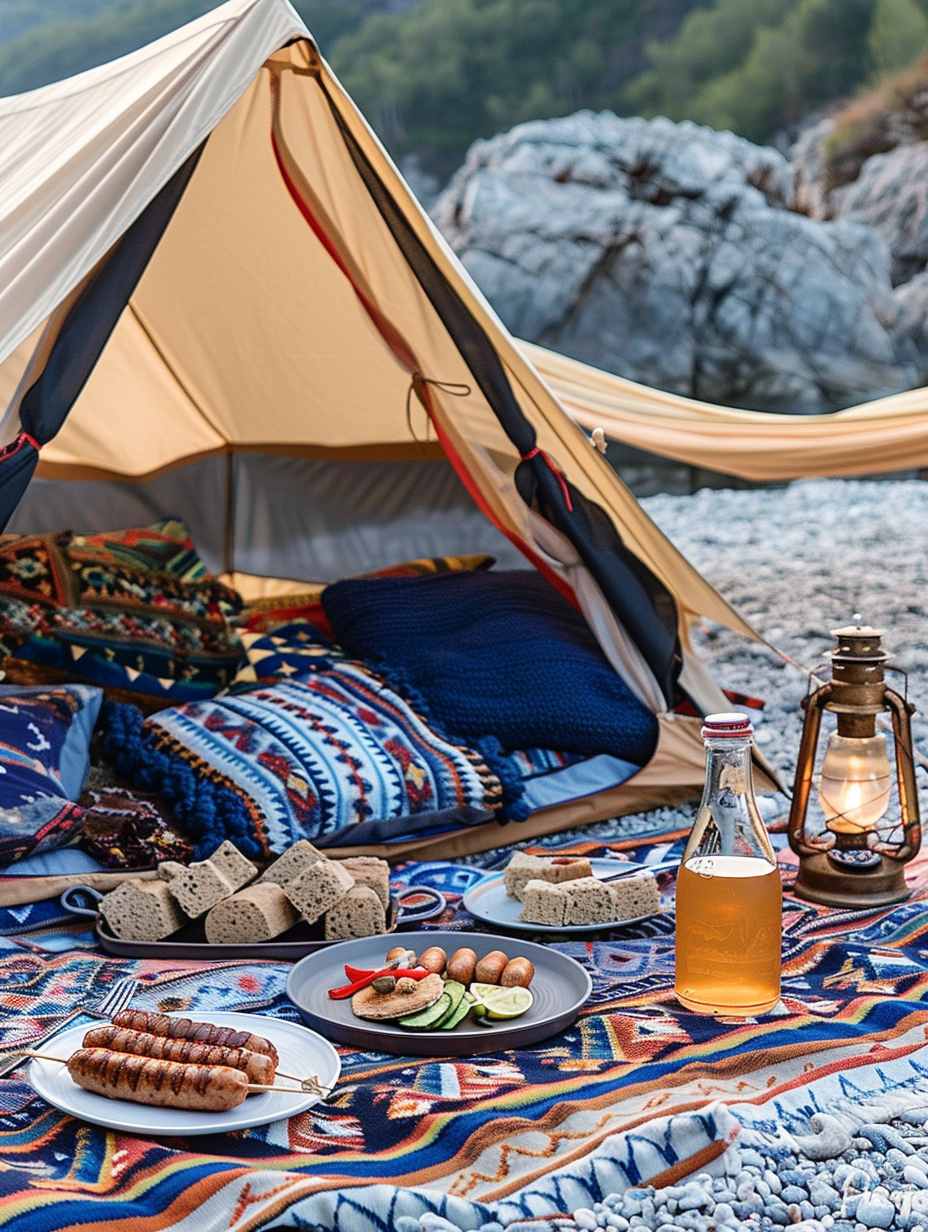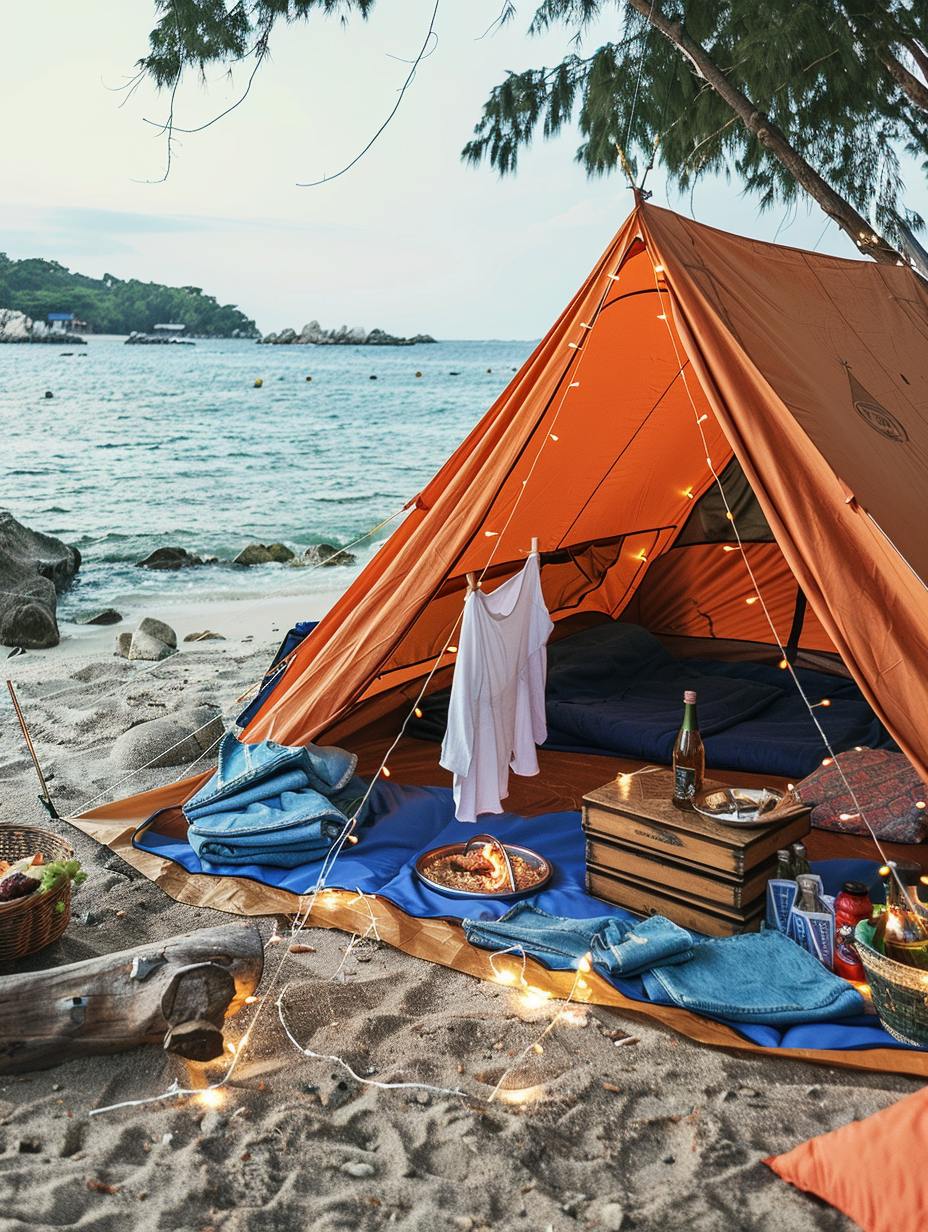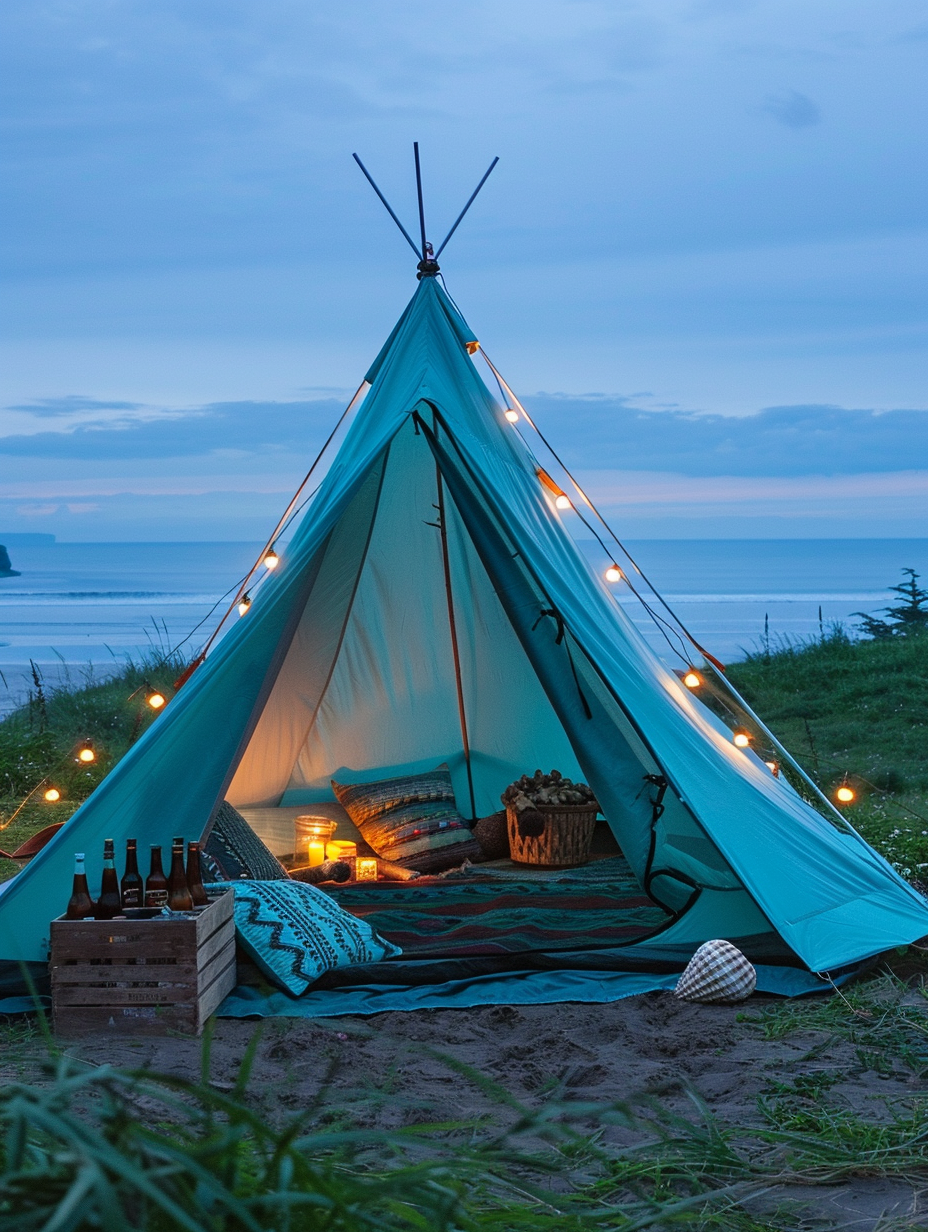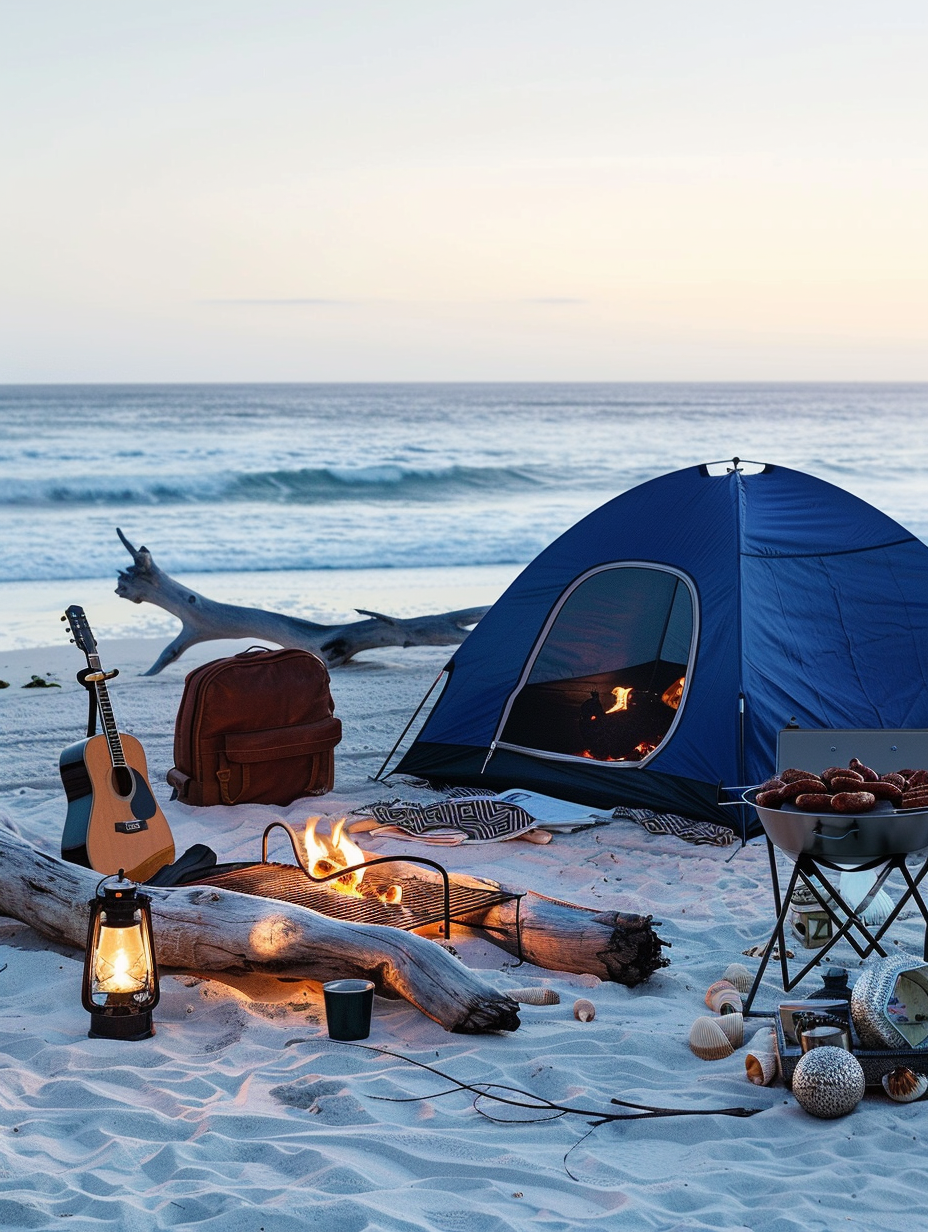planning and designing a beach camping trip can be an exhilarating adventure if you have the right tips and essentials in place. This guide will walk you through setting up a functional, comfortable, and enjoyable beach campsite, focusing on food and drink storage, cooling methods, shade provisions, decorations, and lighting.
*Detailed Gear List BELOW The Guide*

1. Choose the Perfect Location:
Select a beach known for its cleanliness and safety, with permissions for camping. Prefer spots near natural windbreaks like cliffs or trees, and check tide schedules to avoid setting up too close to the water.
2. Secure Permits and Understand Local Rules:
Obtain any necessary permits for beach camping. Familiarize yourself with local regulations—some beaches prohibit alcohol, require fire permits, or have specific wildlife protections.

3. Prepare for Weather and Environmental Challenges:
Pack for both sun and wind exposure. Beach-specific tent stakes, sand mats, and a hammer or mallet are crucial for securing your tent on a sandy surface.
4. Set Up Efficient Food and Drink Storage:
Invest in a high-quality cooler for keeping perishables cold. Use separate coolers for drinks and food to optimize ice retention. Consider portable camping fridges if power is accessible. Pack foods in waterproof containers to protect from sand.

5. Ensure Adequate Cooling:
Aside from coolers, bring along battery-operated fans and cooling towels. Set up your cooking area so it’s sheltered from the sun, perhaps using a pop-up tent or an umbrella.
6. Create a Welcoming Atmosphere with Decorations:
Use beach-friendly decorations such as solar-powered lanterns, string lights, or flags. These not only beautify your space but also help in identifying your campsite at night.

7. Consider Meal Planning:
Pre-cook meals to minimize onsite preparation. Opt for simple, hearty meals like sandwiches, wraps, grilled meats, and salads. Bring portable grills or camp stoves for hot meals. Don’t forget marshmallows for toasting over a campfire, if allowed.
8. Hydration is Key:
Pack a larger water container for general use and personal reusable water bottles for everyone. This reduces the need for frequent refills and ensures hydration is always at hand.



